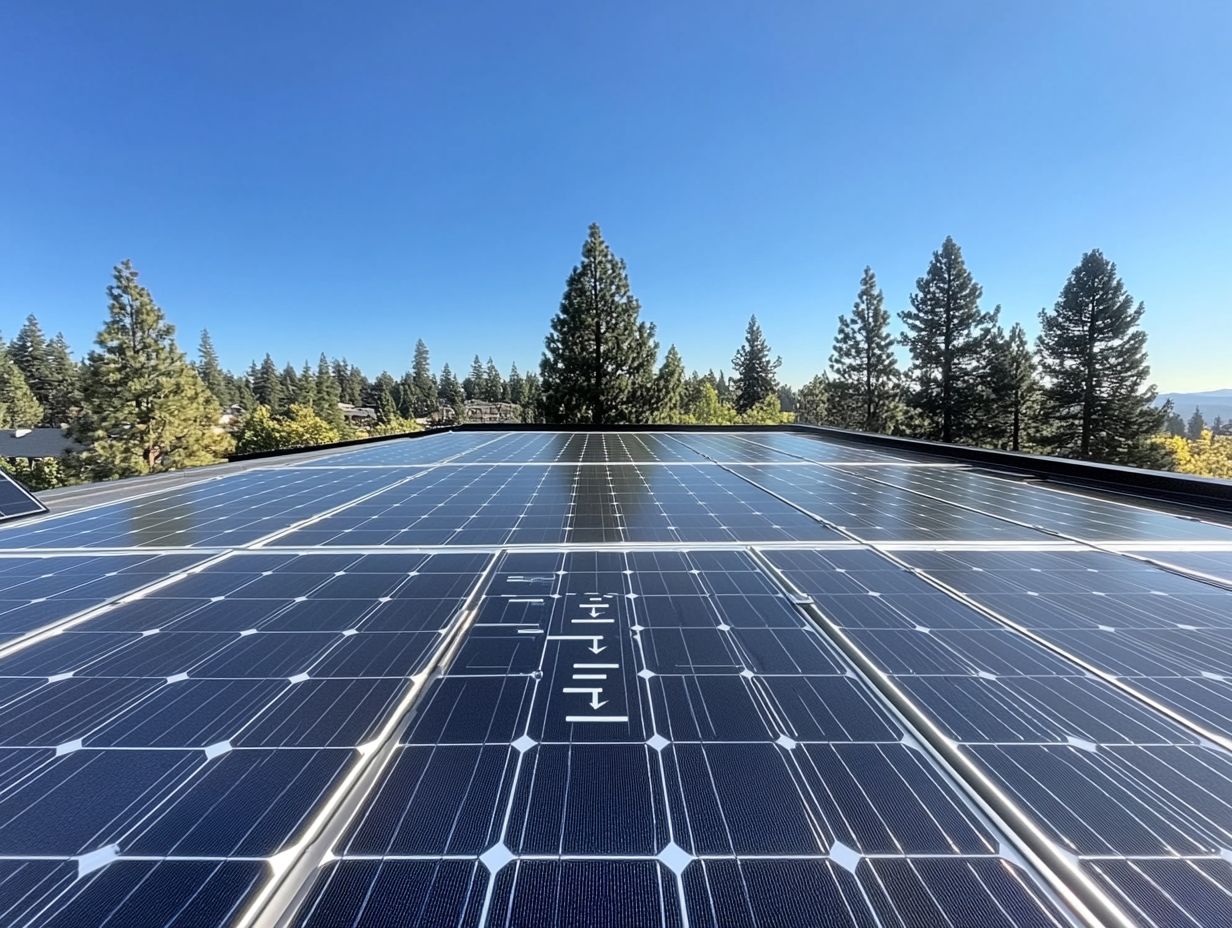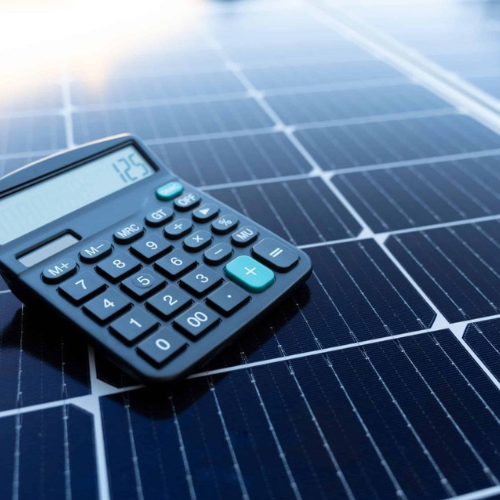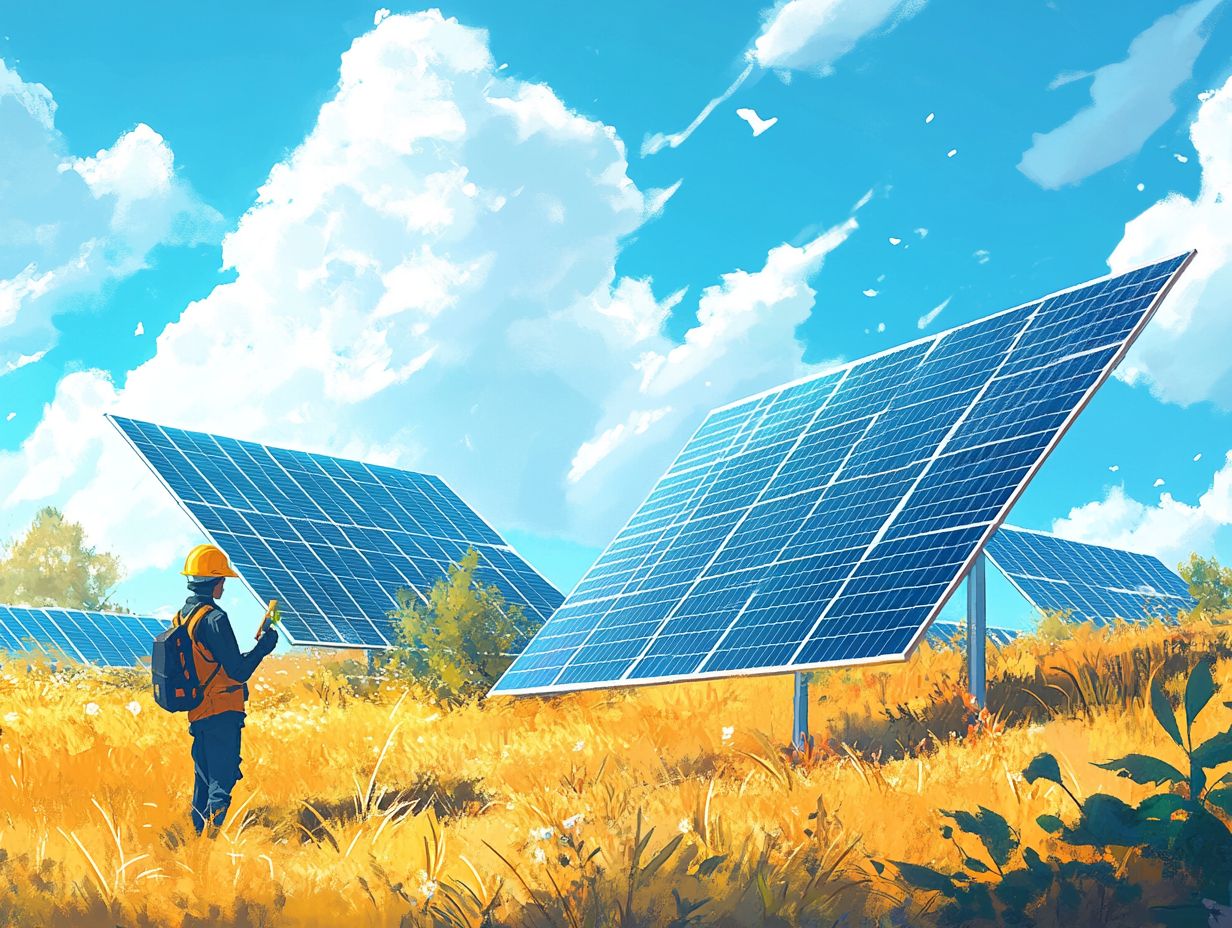Contents
- 1 Understanding Solar Panel Efficiency: Maximizing Your Investment
- 2 Key Factors Affecting Solar Panel Efficiency
- 3 Improving Solar Panel Efficiency
- 4 Guide to Maximizing the Benefits of Solar Panel Efficiency
- 5 Frequently Asked Questions About Solar Energy
- 5.1 What is solar panel efficiency and why is it important?
- 5.2 How is solar panel efficiency calculated?
- 5.3 What factors affect solar panel efficiency?
- 5.4 How do I know if a solar panel is efficient?
- 5.5 Are there different types of solar panel efficiency?
- 5.6 Can I increase the efficiency of my solar panels?
As you dive into the world of renewable energy, understanding solar panel efficiency and energy conversion becomes essential for making the most of your investment.
This article is here to break down what solar panel efficiency really means, the factors that can influence it, including sunlight absorption and temperature coefficient, and how different types of panels stack up under various conditions.
You’ll also find practical tips for boosting efficiency through regular maintenance, such as cleaning and performance monitoring, and upgrades.
By enhancing your solar panel efficiency, you can enjoy significant cost savings and make a positive impact on the environment. Plus, there are some exciting innovations on the horizon in solar technology and energy storage systems that you won’t want to miss!
Understanding Solar Panel Efficiency: Maximizing Your Investment
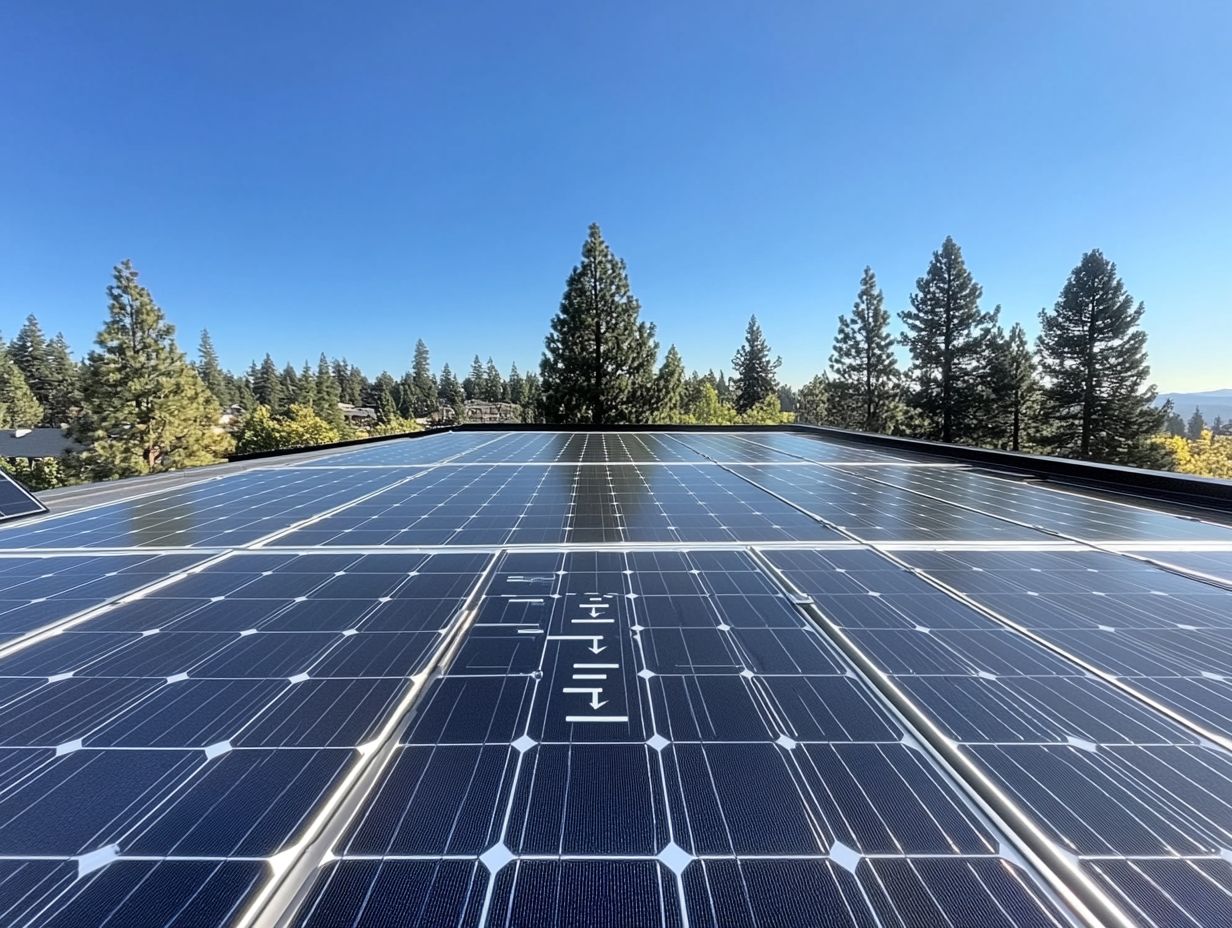
Getting a grip on solar panel efficiency and its impact on system design is key to making the most of solar energy. When we talk about efficiency, we’re referring to how effectively solar panels turn sunlight into usable electricity, impacting photovoltaic performance and energy output.
The type of solar cells you choose, whether they’re monocrystalline, polycrystalline, or thin-film technologies, significantly influences this efficiency. You’ll also want to consider factors like temperature effects, shading effects, angle of installation, and the quality of the inverter you use.
By optimizing these elements, you can boost energy conversion rates and maximize the output capacity of your solar power systems.
What is Solar Panel Efficiency?
Solar panel efficiency is basically how well your solar panels turn sunlight into electricity, and it’s expressed as a percentage. This number is super important for evaluating how well your photovoltaic system is performing. The higher the efficiency, the more energy you get from the same amount of sunlight, enhancing energy savings and return on investment.
Thanks to advancements in solar technology and research and development, new materials, like silicon and thin-film designs, are popping up to boost those conversion rates, ensuring you really get the most bang for your solar buck.
The efficiency rating of your solar panels depends on several factors, including materials like silicon, the quality of manufacturing, and environmental conditions—such as solar irradiance, temperature, and shading.
Typically, crystalline silicon panels, such as monocrystalline and polycrystalline, demonstrate higher efficiencies compared to thin-film options, but keep an eye on those perovskite solar cells; they might just take things to the next level.
To figure out efficiency, you’ll compare the total output of your solar panel under standard test conditions to the input solar energy. This gives you a clear picture of performance.
Understanding these technical details, including testing standards and performance metrics, is key for you, whether you’re a homeowner or a business, as you explore ways to maximize your long-term energy savings.
Key Factors Affecting Solar Panel Efficiency
There are quite a few factors that can affect how well your solar panels work, influencing both their energy output and overall performance.
Firstly, the type of solar panels you select—monocrystalline, polycrystalline, or thin-film—plays a crucial role. Each type has its own efficiency profile and lifespan, so that’s something to consider, especially when factoring in degradation and warranty.
Then there are the environmental factors that come into play, too. For example, temperature can really influence how effectively your solar panels convert sunlight into electricity.
And don’t forget about shading effects—if you’ve got nearby trees or buildings casting shadows, that can significantly impact how much energy your panels can yield, affecting grid connection and energy transition.
Types of Solar Panels
There are three main types of solar panels you should consider: monocrystalline, polycrystalline, and thin-film. Each one has its own unique perks and downsides when it comes to efficiency, energy output, and cost-effectiveness.
- Monocrystalline panels, made from a single crystal of silicon, are known for high energy output and efficiency ratings often topping 20%, making them ideal for limited roof space and maximizing energy generation and sustainability.
- On the other hand, polycrystalline panels are made from multiple silicon crystals and are a more budget-friendly option. They deliver decent performance, with efficiency typically ranging from 15% to 18%, offering cost-analysis advantages for larger installations.
- Then there are thin-film panels, which use various materials to create a lightweight and flexible design. This flexibility is great for applications like building-integrated photovoltaics, hybrid systems, and off-grid systems. Just keep in mind that their efficiency usually falls between 10% and 13%, making them less effective in energy output compared to the monocrystalline and polycrystalline options.
Luque, A., & Hegedus, S. (2011). Handbook of photovoltaic science and engineering. John Wiley & Sons. Link
Environmental Factors
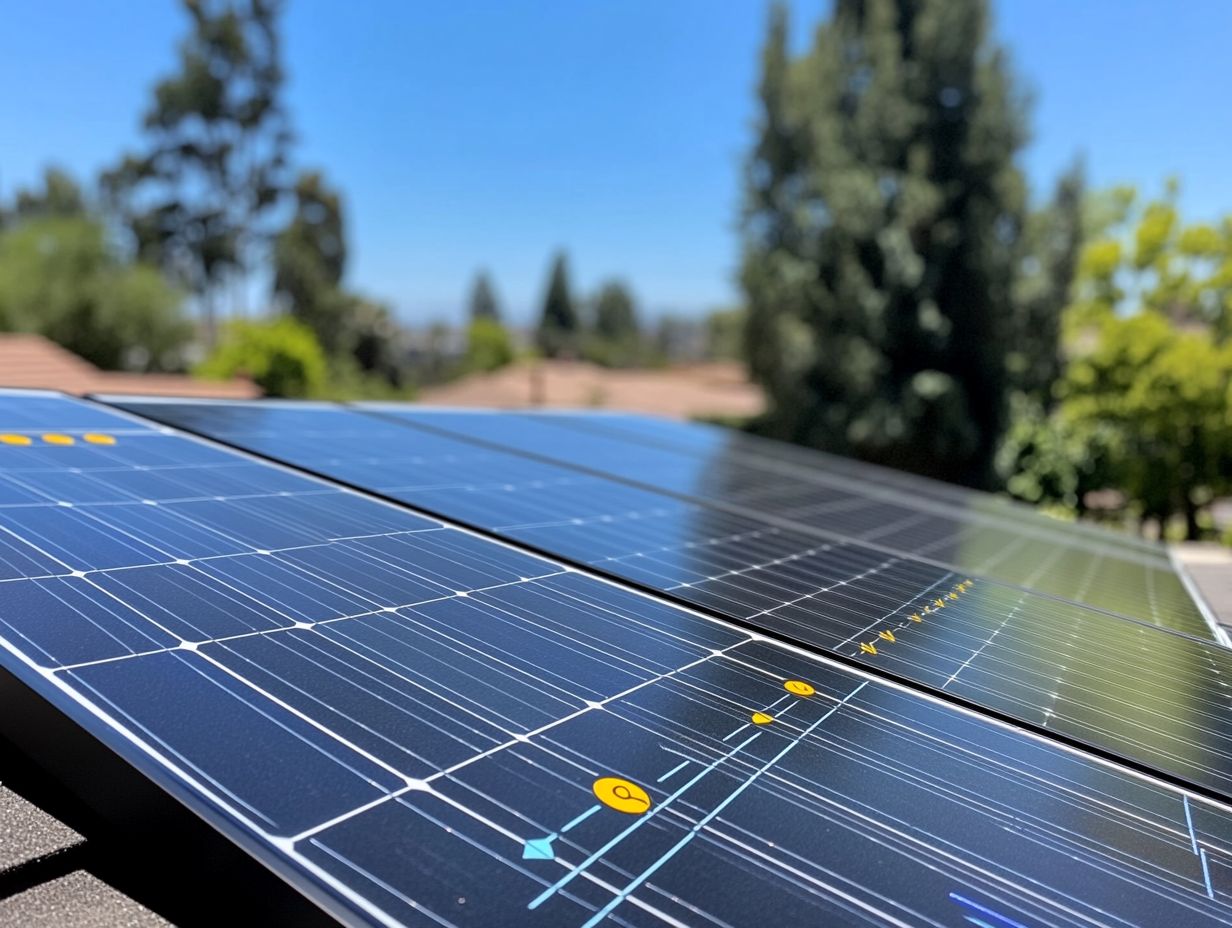
Environmental factors play a big role in solar panel performance and overall energy efficiency, impacting grid stability and system integration. It is important to consider temperature effects, or temperature coefficient, because high heat can decrease solar cell efficiency and affect energy output optimization.
Plus, if trees, buildings, or even dirt build-up start casting shadows on your panels, that can seriously reduce your energy conversion rates, affecting how much energy your solar system can generate.
These environmental elements are interconnected, with geographical factors like local climate variations influencing average temperatures, humidity, and solar market conditions throughout the year. For instance, if you’re in a region with a long rainy season, you might experience more cloud cover, affecting solar irradiance and leading to a noticeable drop in solar generation.
Seasonal changes also come into play, affecting the angle of sunlight and altering how intensely and how long your solar panels are exposed to it.
And it is essential to remember about regular maintenance! Cleaning and inspecting your solar panels is crucial. This mitigates the negative effects of shading and dirt build-up, ensuring you get the most out of your solar energy system.
Improving Solar Panel Efficiency
Improving solar panel efficiency is key to maximizing solar power system energy output and tapping into the solar energy potential.
Regular maintenance, including cleaning and inspections, is essential for keeping your solar panels free of debris and dirt, ensuring optimal performance and extending their lifespan. Anything that blocks sunlight can really cut down their effectiveness.
Consider upgrading to high-efficiency panels to boost energy yield, particularly with limited installation space, for better cost-effectiveness and efficiency benchmarks.
Maintenance and Cleaning Tips
Keeping your solar panels in tip-top shape is key to ensuring they run at maximum efficiency and produce optimal energy, contributing to eco-friendly practices. Regular inspections and cleaning prevent dirt and debris build-up, maintaining solar panel performance and contributing to sustainability. Depending on your local climate, you might find yourself needing to clean those panels more often to keep them effective and extend their lifespan.
For the best results, try to clean your solar panels in the early morning or late afternoon when it’s cooler. This way, you can avoid streaking and let your cleaning solutions do their magic.
A soft brush, a squeegee, and a hose with a spray nozzle are must-have tools for this job, enhancing maintenance efficiency. In cases of significant dirt accumulation on your panels, a mix of mild soap and water can help tackle that stubborn grime. Just steer clear of harsh chemicals—they could damage the panel’s surface.
Also, it is essential to regularly check for shading effects from nearby trees or buildings. It’s a simple way to optimize energy production and ensure system integration runs smoothly.
Upgrading to High-Efficiency Panels
These systems can significantly enhance solar panel efficiency and energy conversion, tapping into renewable portfolio standards. These advanced photovoltaic systems are designed to optimize output capacity and squeeze out more electricity from the same amount of sunlight, making them a smart investment for residential and commercial applications, aligning with energy policy goals.
Increasing conversion rates enhances energy independence, reducing utility bills and contributing positively to energy transition efforts.
High-efficiency options often require less space, a significant advantage for limited roof area. Although initial costs may be higher, long-term energy savings and improved performance provide a compelling return on investment.
This technology aids in maximizing energy harvest while lowering carbon footprint, paving the way for a more sustainable future and supporting eco-friendly practices. And with advancements in manufacturing, the durability and lifespan of these systems have gotten a serious upgrade, ensuring you have a reliable energy source for years to come.
Guide to Maximizing the Benefits of Solar Panel Efficiency
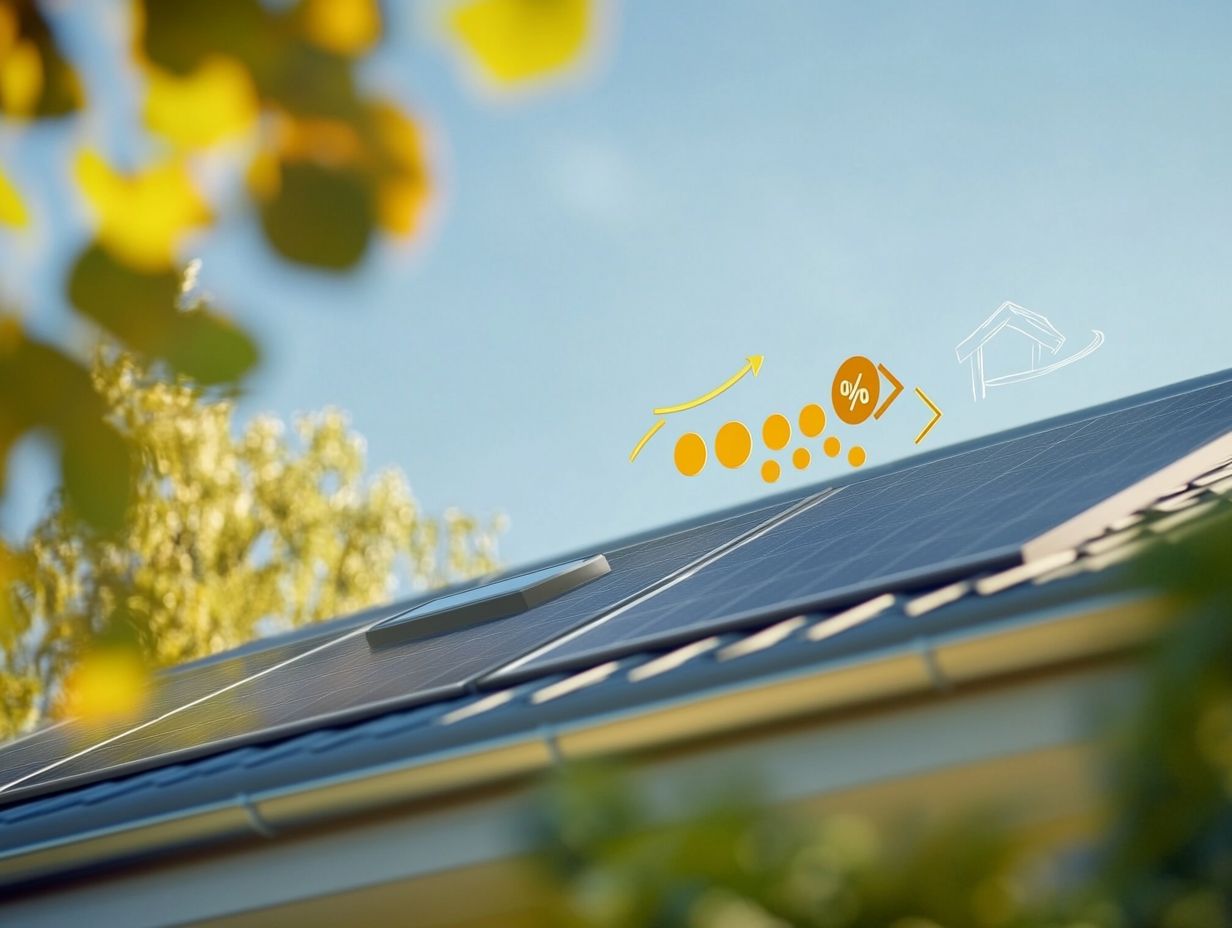
To maximize the benefits of solar panel efficiency, understanding its translation into cost savings, environmental impact reduction, and energy transition is essential.
Efficient solar panels significantly lower utility bills by generating more energy, providing a better return on investment and enhancing economic viability. Optimizing solar power systems not only saves money but also contributes to energy independence and reduces carbon footprint, aligning with sustainable energy goals and renewable portfolio standards.
Benefits of Cost Savings and Environmental Impact
The cost savings from solar panel efficiency are significant, as improved energy output results in lower utility bills, enhancing end-user benefits. Beyond saving money, enhanced solar efficiency benefits the environment by reducing fossil fuel reliance and lowering greenhouse gas emissions, promoting eco-friendly practices and energy efficiency.
This harmony between financial savings and ecological benefits makes investing in efficient solar panels a smart move, fostering sustainable energy and technological advancements.
When you install high-efficiency solar panels, which often utilize advanced solar cells, you’ll notice that your return on investment skyrockets over time. It’s not just the savings on your energy costs; you might also tap into some sweet tax incentives, government policies, and rebates associated with renewable energy adoption.
Plus, additionally, higher efficiency means reduced land requirements compared to lower-capacity options, enhancing cost-effectiveness. This is crucial for minimizing the ecological and carbon footprint of solar installations, paving the way for a more eco-friendly and sustainable future.
In the end, adopting this advanced solar technology, which includes photovoltaic systems and smart technology integration, creates a win-win situation, benefiting both your wallet and the planet through energy savings and reduced environmental impact.
Future Developments in Solar Technology
Future developments in solar technology are set to bring some exciting innovations your way that will boost solar panel efficiency, performance metrics, and make them more accessible. Ongoing research into advanced materials, such as silicon, thin-film, monocrystalline, and polycrystalline technologies, is paving the way for more effective photovoltaic systems, which could lead to better energy conversion rates, output capacity, and lower costs for you.
Keeping an eye on market trends and conducting thorough market analysis will help you stay in the loop about the best options for your solar energy needs and potential upgrades for increased energy efficiency.
Initiatives focused on integrating artificial intelligence and machine learning are changing the game for how solar panels are monitored and optimized in real-time, enhancing performance monitoring and efficiency rating. This means less downtime for you and maximized energy output and conversion rate.
Plus, new financing models, like community solar projects and power purchase agreements, are democratizing access to solar energy, improving economic viability. This makes it more financially viable for a wider range of consumers, including you, and promotes higher adoption rates across diverse sectors.
As these groundbreaking technologies roll out, both residential and commercial sectors are poised to benefit, creating a sustainable energy landscape that could greatly reduce reliance on fossil fuels, promote energy independence, and enhance global energy security through energy transition.
REN21. (2020). Renewables 2020 Global Status Report. REN21 Secretariat. Link
Frequently Asked Questions About Solar Energy
What is solar panel efficiency and why is it important?
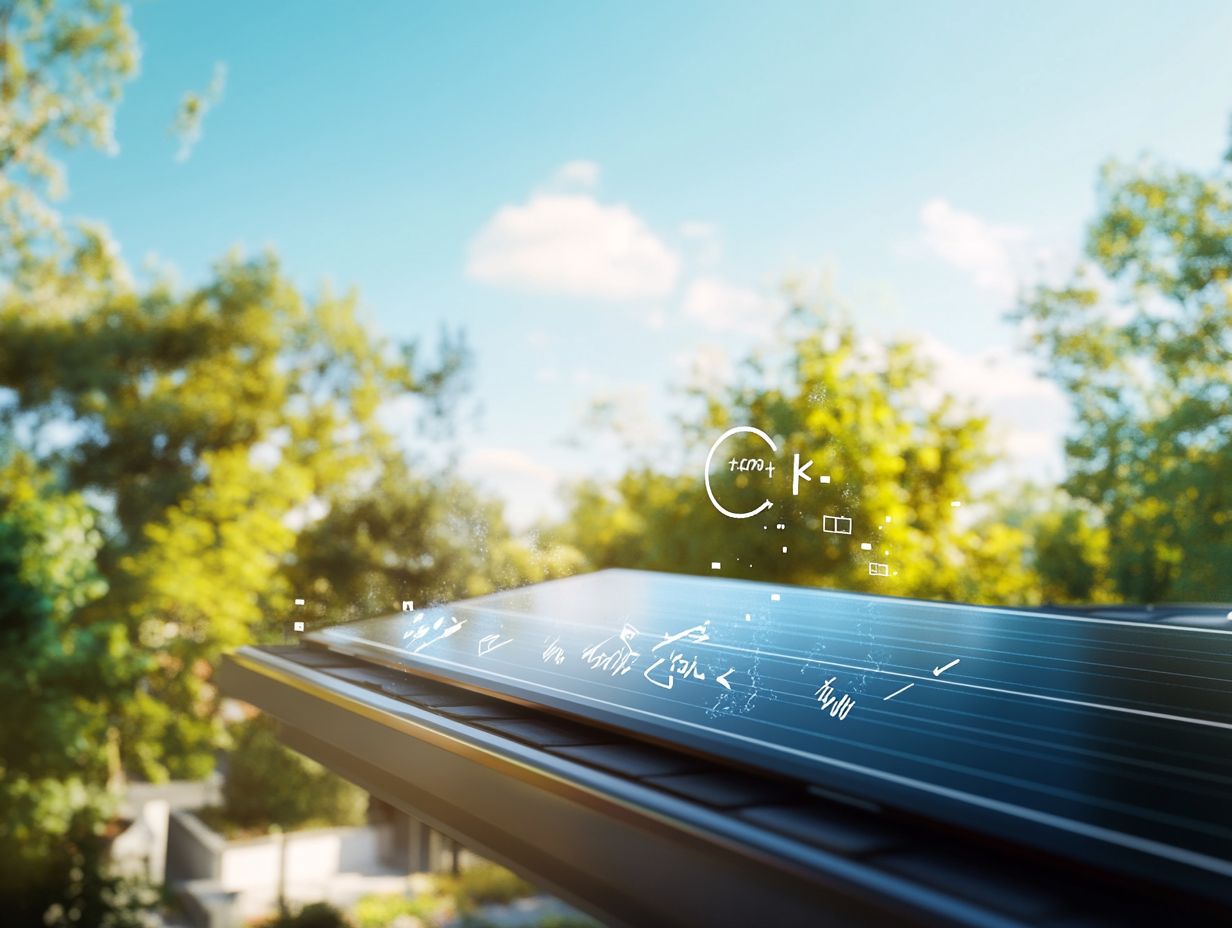
Solar panel efficiency measures how much sunlight a panel can convert into usable electricity through efficient sunlight absorption. Higher efficiency translates to increased energy production and improved power generation capabilities, making it an important factor to consider when choosing solar panels for your home or business.
How is solar panel efficiency calculated?
Solar panel efficiency is calculated by dividing the panel’s output power by its input power (sunlight), reflecting the energy conversion process. This result is then multiplied by 100 to express efficiency as a percentage. For example, a panel with an output power of 300 watts and an input power of 500 watts has an efficiency of 60%, a crucial factor in assessing performance.
What factors affect solar panel efficiency?
The efficiency of a solar panel can be affected by several factors, including temperature, shading effects, dirt/dust accumulation, and the type/quality of materials used in its construction. Additionally, factors such as the temperature coefficient, installation angle, and tilt can significantly influence overall performance. It’s important to consider these factors when choosing the right solar panels for your needs.
How do I know if a solar panel is efficient?
One effective method to assess the efficiency of a solar panel is by examining its performance ratio, which is the ratio of the panel’s actual energy output to its theoretical maximum output. This serves as an efficiency benchmark. A higher performance ratio means higher efficiency and better performance.
Are there different types of solar panel efficiency?
Yes, there are two main types of solar panel efficiency – conversion efficiency and production efficiency. Conversion efficiency measures how well a panel converts sunlight into electricity, which is critical for energy savings and power generation, while production efficiency takes into account the overall performance of a panel over time, including factors like degradation, maintenance, and lifespan.
Can I increase the efficiency of my solar panels?
Yes, there are several ways to increase the efficiency of your solar panels, such as keeping them clean and free of shade, using solar panel tracking systems, understanding grid connection and grid stability, and investing in higher quality panels. Consistent maintenance, conducting energy audits, and making necessary upgrades can significantly boost efficiency, prolong lifespan, and improve the overall system design.

